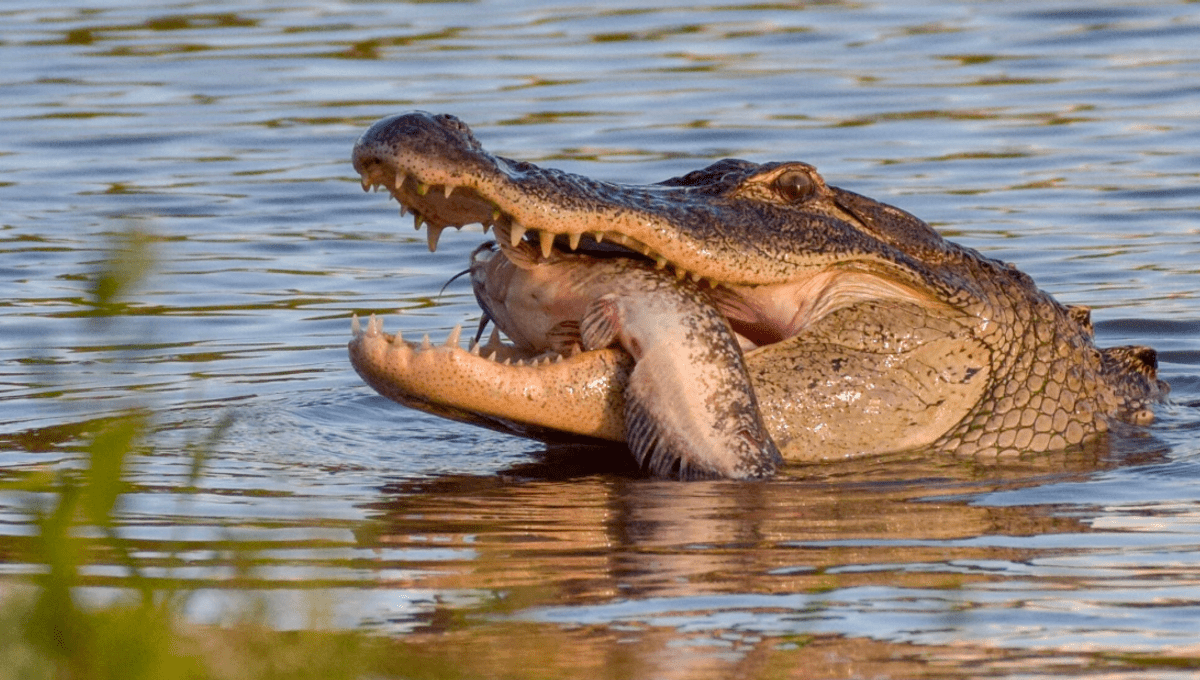
Science has a magical way of coming up with Hollywood solutions to everyday problems. The death of farmed fish in aquaculture from infections is astronomical each year, stretching into the millions, but now researchers have come up with a way to protect catfish from illness: by casually chucking a bit of alligator DNA into their genome.
Farming is a good way of building stocks of fish for consumption without taking from wild populations, but like all farming, the gathering of many animals in one place comes at a cost. For farmed catfish, this is the spread of disease and infection that can rip through stocks resulting in a lot of lost life and financial devastation for farmers.
Smushing catfish together with alligators might seem like a leap in terms of solving the problem, but there is method to the genetic madness. Gators have a protein tucked away in their intestines called cathelicidin. This antimicrobrial polypeptide plays a crucial role in immunity and can help these animals fight off illness. So feasibly, were it to develop in catfish, it could help them to do the exact same.
Creating catgator or allifish, depending on your preference, was facilitated by CRISPR gene editing, which works by snipping out bits of genetic code and replacing them with new ones. It’s historically been suggested as a method of giving humans immunity to certain diseases or conditions, and has been used a lot in mammals.
Researchers wanted to see if it could be effective for fish too, so decided to try and tackle the immune threats faced by farmed catfish by snipping out a section of their genome and replacing it with one from that of an alligator, which gives rise to cathelicidin. The process is described in a pre-print paper.
“Taking advantage of the CRISPR/Cas9-mediated system, we succeeded in integrating the cathelicidin gene from an alligator (Alligator sinensis; As-Cath) into the target luteinizing hormone (LH) locus of channel catfish (Ictalurus punctatus),” explained its authors. They hoped that by doing so, it could both demonstrate the efficacy of the CRISPR approach in fish while also gene editing catfish to have stronger immune function.
The resulting population showed that alligatorfied catfish exhibited heightened disease resistance compared to their wild-type siblings. The CRISPR treatment also reduced their fecundity (ability to produce offspring), but this was able to be restored with hormone therapy.
“This strategy not only effectively improves the consumer-valued traits, but also guards against genetic contamination,” the authors concluded. “This is a breakthrough in aquaculture genetics to confine fish reproduction and prevent the establishment of transgenic or domestic genotypes in the natural environment.”
The preprint paper hasn’t yet undergone peer review and was featured in bioRxiv.
Source Link: Scientists Alligatorfied Catfish Using CRISPR To See If It Improved Their Immunity